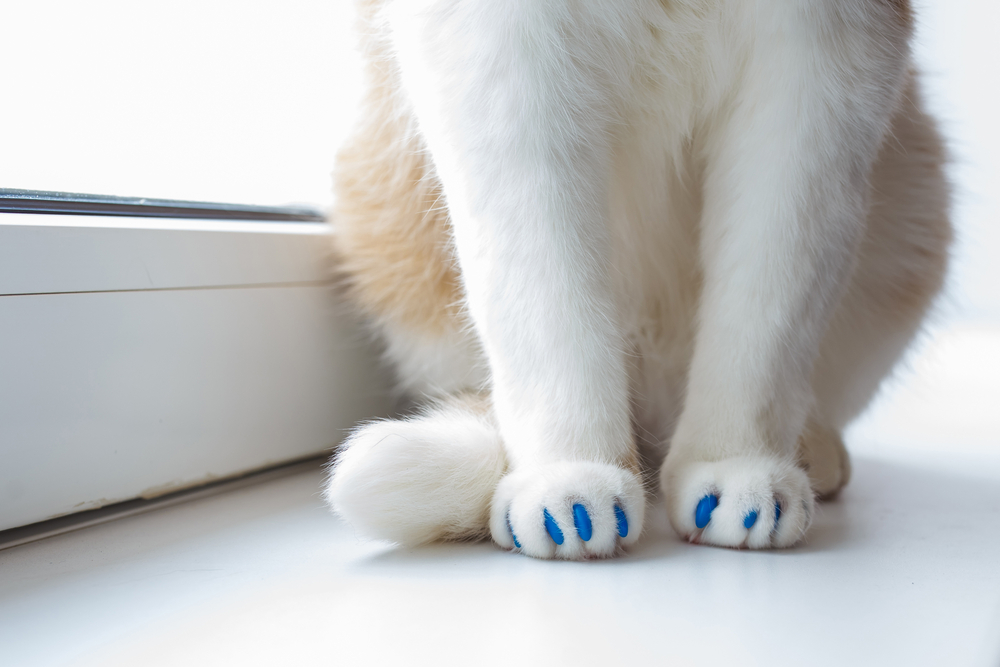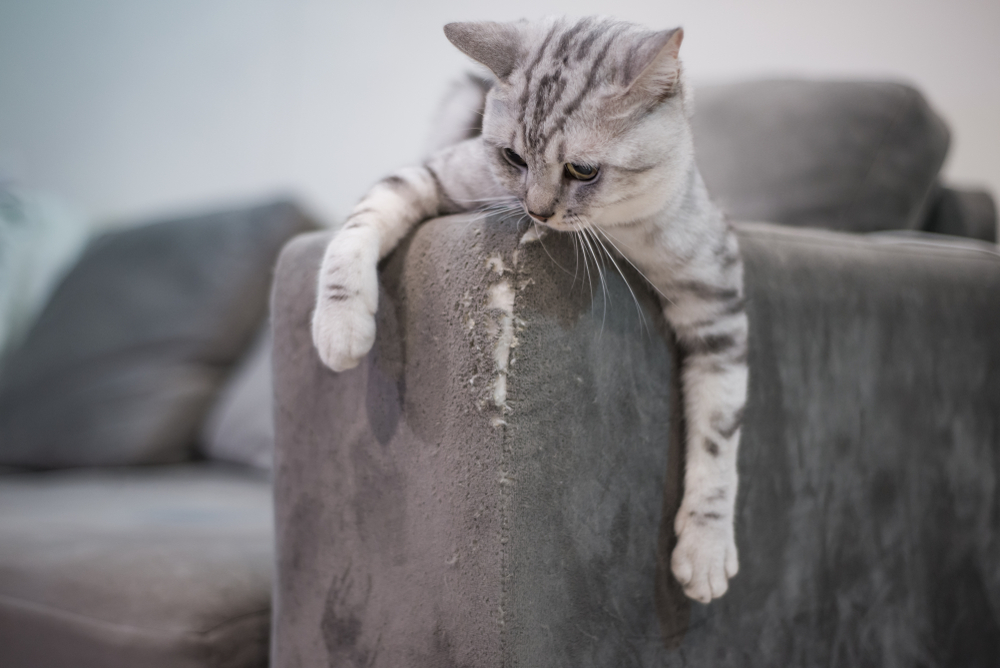Scratching is normal and necessary for cats, but if your feline friend uses your furniture or curtains to sharpen their claws, you may find the behavior upsetting. To help prevent your cat’s claw art from affecting your pet-owner bond, our Willow Wood Animal Hospital team explains why cats scratch and provides tips to prevent destructive scratching behavior.
Why cats scratch
Scratching is a normal feline behavior, but if your cat doesn’t have access to appropriate scratching surfaces, they can destroy your belongings. However, your whiskered pal isn’t scratching because they want to make you angry. Scratching serves many roles in your cat’s life, including:
- Maintaining nail health — To keep their claws sharp, healthy, and ready to snag the next rattle mouse, your cat scratches to remove dead nail tissue.
- Stretching their muscles — A cat typically initiates a scratch by embedding their claws into a surface and stretching deeply, which keeps their back and forelimb muscles loose and limber for those zoomy sessions.
- Marking their territory — Cats have scent glands between their toes, and when they scratch, they are communicating with other cats in the area, indicating “Fluffy was here!”
- Responding to stress — Many cats are especially sensitive to stress, and one way they may respond is by scratching.
- Relieving boredom — When your cat isn’t receiving adequate mental stimulation and physical exercise, they may resort to scratching to relieve boredom.
Redirect inappropriate feline scratching behavior
Typically, if cats have appropriate scratching surfaces, they will use them. However, if your feline friend has become accustomed to scratching inappropriate surfaces, redirecting their behavior may take time. To redirect your cat’s destructive scratching behavior, follow these tips:
- Provide numerous appropriate scratching surfaces — Provide appropriate scratching surfaces throughout your home. If you have multiple household cats, ensure you have enough scratching posts for each one.
- Place scratching surfaces strategically — Place appropriate scratching surfaces in areas where your cat likes to rest or play. If you place a scratching post in an isolated corner, your cat probably will ignore it.
- Give your cat options — Scratching posts come in numerous orientations, offering various surface types. Provide numerous scratching post options to ensure you are fulfilling your cat’s scratching preferences.
- Stabilize the scratching surface — Ensure the scratching post is stable. If the post topples when your cat uses it, they may become frightened, causing your whiskered pal to avoid the object.
- Make the scratching surface attractive — To tempt your cat, place catnip or their favorite toy on the appropriate scratching surface.
- Redirect your cat’s attention — To help redirect your feline friend’s attention, place the appropriate scratching surface sprinkled with catnip near or in front of the area your cat has inappropriately scratched.
- Make inappropriate surfaces unappealing — To make an inappropriate scratching area unappealing, place double-sided tape or aluminum foil on the surface.
- Cover the inappropriate scratching surface — You can also use a blanket or furniture cover to cover the inappropriate scratching area until your cat starts using an appropriate scratching surface.
- Clean the area — A cat is attracted to areas they have previously scratched because they leave their scent. To deter your cat from continuing to scratch an inappropriate scratching area, clean it well, using an enzymatic cleaner.
- Replace an appropriate scratching surface respectfully — If your cat’s scratching surface looks terrible, you may want to replace it, but respect your whiskered pal’s wishes. They like their well-worn scratching surface and may not use a new one. Place the new scratching post alongside the old one, and let your feline friend start using the new surface before removing the old one.
- Never punish inappropriate scratching — Punishing your cat only results in increased stress, which can exacerbate the situation.
Tips to maintain your cat’s nails
Maintaining your cat’s nails appropriately can help reduce the damage they cause to your furniture and curtains. To help maintain your cat’s nails, follow these tips:
- Trim your cat’s nails regularly — Trim your cat’s nails every 10 to 14 days. To trim your whiskered pals nails, follow these tips:
- Gather your supplies — You will need cat-specific nail trimmers, treats, patience, and possibly a towel or helper.
- Restrain your cat — Your whiskered pal may do well sitting in your lap while you trim their nails. However, don’t be surprised if your cat needs more secure restraint, such as being held by a friend or wrapped in a towel.
- Extend your cat’s nail — Put gentle pressure on your feline friend’s paw pad to extend their nails.
- Trim the sharp tip — Trim only the nail’s sharp tip, avoiding the quick, which contains nerves and blood vessels.
- Be patient — Many cats only allow one or two nails to be clipped per session. Be patient and don’t force your cat to comply.
- Treat your cat — Give your cat a good chin rub and a treat after every nail you trim.
- Use nail caps — You can glue plastic caps on your cat’s nails to help prevent damage to your furniture and curtains. These caps usually remain in place for about one to two months.

The problem with declawing your cat
If your cat’s scratching is destructive, you may be thinking about having them declawed. Don’t! The procedure is drastic, involving a complete amputation of your cat’s toes at the first knuckle. Declawing can lead to chronic pain and associated behavioral problems. In fact, many countries and U.S. states, such as New York and Maryland, have banned the procedure, and many other U.S. states are considering making declawing illegal.
If your cat has been scratching destructively, you are likely feeling frustrated. However, don’t despair, our Willow Wood Animal Hospital team is here to help. Contact our American Animal Hospital Association (AAHA)-accredited team if you need help redirecting your cat’s inappropriate scratching behavior or if they refuse to cooperate for their nail trimming session.







Leave A Comment